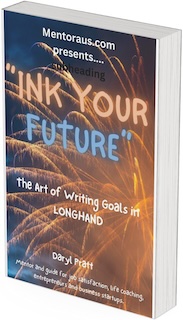THIS IS AN 'AD FREE' SITE
This site is ad-free. Instead of cluttering it with ads, I simply ask: if you find value here, consider buying me a coffee to help cover the costs. Thank you!
Just click on the SUPPORT ME button
How Do You Find a Customer?
How do you find a customer is an age-old issue confronting every business? Whether you a starting your business or have been in business for a while.
 The customer. The asset of a business. Without this person you have nothing.
The customer. The asset of a business. Without this person you have nothing.Before a customer is added to your database, it starts as a lead, then a prospect, and finally a client. A client is revenue. Doesn’t matter how you say it, a client is your pay dirt. Your golden ticket to growth, prosperity and your future. Without clients, you don’t have a business.
 This is your pay dirt. Where the process turns to gold.
This is your pay dirt. Where the process turns to gold.All businesses need customers. Remember what I have been saying on other pages, “nothing happens until we make a sale”.
Making a call to a prospect is sometimes a daunting task. I have seen budding entrepreneurs freeze at the prospect of picking up the phone to make the call. They will procrastinate and find anything to do rather than make the call.
 You gotta' make the call. Nothing happens till a sale is made. It starts with the call.
You gotta' make the call. Nothing happens till a sale is made. It starts with the call.How do you find a customer? By making the call part of the sales process.
For some, it is not an issue, but for most, it is a hard task, but it has to be done.
Sure, you are going to get pushbacks and the occasional rude prospect, but it has to be done. This will test your level of commitment.
To remedy call reluctance. This is what it’s called. I need to take you through the total process of how do you find a customer. It all starts with a lead.
What is a lead?
A lead is a person or business or corporation that uses your product or services or might use a product or service similar to yours. But yours is better, faster, slicker, more powerful. Right? But how do you find a customer?
Well, first you make a list of these businesses/people.
Do not judge them. Yet.
Make a list of at least 100. Use a spreadsheet. This is the best method and makes it easy to track and record your progress.
The bare minimum information is obviously the name and contact number.
 A simple template of a contact list. Build a spreadsheet that suits your style and business.
A simple template of a contact list. Build a spreadsheet that suits your style and business.Now build around it. Be a sleuth a detective and find out as much as you can about the prospects the vice president’s name etc.. Record it in the spreadsheet. This will become your business directory. This is the first step in how do you find a customer.
When you have done this, I want you to create a priority number for each prospect. I want you to do the easy ones first (the low hanging fruit) to gain confident to take on the pushbacks. You will get pushbacks guaranteed.
Now let’s summarize this part of the process.
- Find a lead
- Do the detective work to expand the name and contact details to get as much information as you can.
- Enter all the info into the spreadsheet.
 Do the detective work and discover everything you can about your lead. Turn the lead into a prospect.
Do the detective work and discover everything you can about your lead. Turn the lead into a prospect.That’s it for this part of how do you find a customer.
Next, go to work on the lead and turn it into a prospect. This could take a day or months. Never give up.
How to make a lead a prospect
With the spreadsheet, I want you to make a filter system.
The filter system will be entirely individual. It is your style to fit your business. OK?
The filter system is nothing complicated. Number each item in the spreadsheet. Say, 10 is a hot prospect, 1 is cold. Easy. Take your time. Sometimes it takes months to get the information. Keep adding to the lead. Move the lead priority according to your filter system.
Let’s give an example
You have a software business or are about to start your software business. You have developed software which has a unique element. Maybe it is a client information element. Or a payroll system. Maybe the software can be remotely operated from a cell phone. I don’t know. What ever makes your product have a USP (a unique selling proposition).
The first box to tick on the lead is, ‘can this business/person benefit from my product?’
Enter it in the spreadsheet.
Maybe you have another box for locality. For example, is the lead in my neighbourhood, my town, my state. Give it a tick for proximity. Rate it.
Can this lead afford the product? Tick the box.
Maybe the product has a benefit for multiple employees. Find the workforce of the business and tick the box if it meets the criteria.
You are pre-judging now what info you have sought from your detective work and recorded in the spreadsheet.
Get creative with the questions and answers you want from the lead to make it a prospect and what temperature the prospect will generate. Be Sherlock Holmes. Evaluate the information and make some sound assumptions and judgements to score points.
You need at least 10 - 15 questions to make a sound judgement.
Take your time. This is not a race.
Never delete a lead
 Grow your business with a good base of great customers.
Grow your business with a good base of great customers.Never dispose of a lead. It might not be a prospect now, but it has been my experience that eventually they do as more information presents itself over time and as you grow your business, you make contacts that have info about other businesses/people listed in your spreadsheet.
Keep adding to the spreadsheet as you discover other leads.
Remember this is your black book, your business directory of how to find a customer.
Now you have a list of hot prospects to cold prospects. It’s time to contact them and make an appointment.
How to make an appointment
You have heard the phrase, “sell the sizzle not the stake”. Yes?
When you are making a call to a prospect, PLEASE, PLEASE, do not sell the product. If you do, I’ll jump through the screen and rip your tongue out.
Your sole purpose of the call to the prospect is to make the appointment.
Not the sale.
I’ve got to say that this is the teaching and mentoring of a good, experienced mentor. I know I harp on this, but get yourself a mentor sooner rather than later. A mentor sharpens your focus and keeps you on the path to success.
Write your script
Next, write out a phone contact script and learn it off by heart.
Remember, you have to be specific to be terrific.
The script should have this phrase, “If I could show you a (insert your USP) that could save you/your business money and increase your bottom line. Would you be interested in meeting and taking a look”?
Shut up. You have just asked a closing question.
Remember the first one to talk after asking a closing question, loses.
Obviously, there is a natural rhetoric to this line of communication you need to understand and be prepared for. That is the reply from the prospect. Normally something like, “of course I would be interested” or something like that followed by, “what does it do, or what’s it all about?”
Remember, you are selling the appointment not the product.
Your next response is a version of what your opening was, but this time you are tightening with a close on time and place.
“Jim, it’s about lowering over heads and increasing profit. It will take 26 minutes to explain. I’m going to be in your area next week and I was wondering if I could buy you a coffee to show you this opportunity. You be the sole judge. I’m wondering if next Tuesday at 10 would suit you or would you prefer Wednesday afternoon at 3pm?” Turn it around a bit, but your response is the same.
Another closing question. What do you do?
That’s right. Shut up.
The importance of a specific timeframe
We intentionally set the 26 minutes. It tells the prospect psychologically you have presented before. You are not wasting time. It gives an end point. We have informed the prospect how long it takes. The prospect considers 26 minutes is not a waste of time to decide if this is an opportunity or a waste of 26 minutes. Trust me, this is gold.
There may be more pushback, but hold your line and keep going for the appointment. You might say something like, “You will never never know if you never never go”. You figure out your line of overcoming rejections according to your character and nature. It must be to sell the appointment, not the product.
Attempt 3-4 times to get the appointment. If you fail, politely end the call with an option to get permission to call at another time or something like that. This is not a lead that is going to convert. Record the conversation in writing and move on.
 Record the outcome of every call. Maybe create a simple template to save time.
Record the outcome of every call. Maybe create a simple template to save time.Just a point on recording the conversion. Over time, you will write the same or similar things. It might be a good business idea to make a template to save time.
Rejections - Do not take it personally
In reality, you are going to get many rejections. DO NOT TAKE THIS PERSONALLY.
With motivation and support from a mentor, you will get back on the horse and keep going.
Over time, you will get better. You will increase your hit rate. How will you know this? Because you keep records. How do you find a customer is about practising the process.
After every call, write the results. Write a summary of the conversation. This is vital.
When you have filled your appointment slots, it is time to go make a presentation and the close the sale. Go make truck loads of sales. This is where the rubber hits the road.
Practice the method until you have the confidence to have a go. Then just do it.
Now you have to present and close the sale. How do you do that? I will dedicate another page to just that concept. Stay tuned.
Summary
Collect leads. Do not judge them.
Enter them into a spreadsheet.
Do your due diligence and detective work to qualify them.
Rate them 10 - 1 according to your rating system.
Write a contact script.
Practice delivering your lines as natural as per your personality.
Sell the appointment, not the product.
Understand what rejection is. Do not take it personally.
Never give up. This separates from the successful businesses from the failures.
When you do this, you have mastered - how do you find customers?
After a closing question. What do you do?
That’s right. Shut up.
That is how do you find a customer.
Consider signing up for my newsletter below.
Until next time, go you good thing.
Experience isn't the best teacher, experience is the only teacher.

Confidence comes from experience



